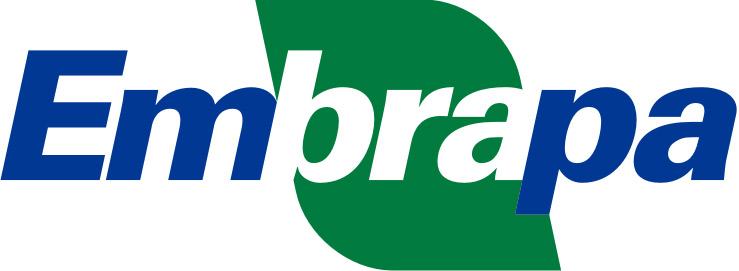Please use this identifier to cite or link to this item:
http://www.infoteca.cnptia.embrapa.br/infoteca/handle/doc/1180417Full metadata record
| DC Field | Value | Language |
|---|---|---|
| dc.contributor.author | OLIVEIRA, F. I. C. de | |
| dc.contributor.author | CARVALHO, A. V. F. | |
| dc.contributor.author | CARVALHO, A. C. P. P. de | |
| dc.contributor.author | ARAGAO, F. A. S. de | |
| dc.date.accessioned | 2025-10-21T19:54:02Z | - |
| dc.date.available | 2025-10-21T19:54:02Z | - |
| dc.date.created | 2025-10-21 | |
| dc.date.issued | 2025 | |
| dc.identifier.citation | Fortaleza: Embrapa Agroindústria Tropical, 2025. | |
| dc.identifier.uri | http://www.infoteca.cnptia.embrapa.br/infoteca/handle/doc/1180417 | - |
| dc.description | A cultura do meloeiro tem grande importância socioeconômica, especialmente no Nordeste. Nos programas de melhoramento genético de meloeiro, que dependem da utilização de técnicas biotecnológicas, é indis- pensável o desenvolvimento de métodos eficientes de regeneração in vitro de plantas. Objetivou-se estudar o efeito de auxinas e citocininas, isoladas e combinadas adicionadas ao meio MS, na indução de calos, em segmentos apicais de gavinhas de meloeiro amarelo híbrido Goldex. Dois experimentos foram conduzidos, em delineamento inteiramente casualizado, com 25 repetições por tratamento. No primeiro experimento, em esquema fatorial 3 x 3, os tratamentos foram gerados pelas concentrações de 6-furfurilaminopurina – CIN (0; 3 e 6 mg L -1 ) e ácido indolacético – AIA (0; 3 e 6 mg L -1 ), adiciona- das ao meio de cultivo MS. No segundo experimento, foram testados seis tratamentos: MS sem regulador de crescimento; MS + 0,20 mg L -1 de 6-ben- zilaminopurina (BAP); MS + 0,20 mg L -1 de ácido naftalenoacético (ANA); MS + 0,45 mg L -1 de ácido 2,4-diclorofenoxiacético (2,4-D); MS + 0,20 mg L -1 de BAP + 0,20 mg L -1 de ANA; e MS + 0,20 mg L -1 de BAP + 0,45 mg L -1 de 2,4-D. Aos 60 dias após a inoculação dos explantes, foram avaliadas a por- centagem de indução, a intensidade de oxidação, a coloração, a textura, a área e a massa fresca dos calos, bem como a correlação entre essas duas últimas características. As auxinas (AIA, ANA e 2,4-D) e as citocininas (CIN e BAP) induzem calogênese em maior área em gavinhas, em especial em combinação, sendo a mais adequada 0,20 mg L -1 de BAP + 0, 20 mg L -1 de ANA. Nesta combinação, os calos apresentaram coloração verde, textura friável e baixa oxidação. Constatou-se forte correlação entre massa fresca e área dos calos formados nas gavinhas. Este estudo contempla o primeiro relato do estabelecimento de um protocolo de indução de calos em explantes de gavinha em meloeiro. Melon crop has great socioeconomic importance, especially in the Northeast. In melon genetic breeding programs, which depend on the use of biotechnological techniques, the development of efficient in vitro plant re - generation methods is essential. The objective was to study the effect of auxins and cytokinins, isolated and combined, added to the MS medium, on cal- lus induction in tendrils of the hybrid Goldex yellow melon. Two experiments were conducted, in a com- pletely randomized design, with 25 replications per treatment. In the first experiment, in a 3 x 3 factorial scheme, the treatments were the concentrations of 6-furfuryl-aminopurine – KIN (0; 3 and 6 mg L -1 ) and indolylacetic acid – IAA (0; 3 and 6 mg L -1 ), added to the MS culture medium. In the second experiment, six treatments were tested: MS without growth reg- ulator; MS + 0.20 mg L -1 of 6-benzylaminopurine (BAP); MS + 0.20 mg L -1 of naphthaleneacetic acid (NAA); MS + 0.45 mg L -1 of 2,4-dichlorophenoxy- acetic acid (2,4-D); MS + 0.20 mg L -1 of BAP + 0.20 mg L -1 of NAA; and MS + 0.20 mg L -1 of BAP + 0.45 mg L -1 of 2,4-D. At 60 days after explant inoculation, the following characteristics were evaluated: percentage of induction, oxidation intensity, color, texture, area and fresh mass of the callus, as well as the correlation between these last two character- istics. Auxins (IAA, NAA and 2,4-D) and cytokinins (KIN and BAP) induce callogenesis in larger area in tendrils, especially in combination, the most appro- priate being 0.20 mg L -1 of BAP + 0.20 mg L -1 of NAA. In this combination, the calluses showed a green color, friable texture and low oxidation. A strong correlation was between fresh mass and the area of calluses formed on the tendrils. This study includes the first report on establishment of callus induction protocol in melon tendril explants. | |
| dc.language.iso | por | |
| dc.relation.ispartofseries | (Embrapa Agroindústria Tropical. Boletim de pesquisa e desenvolvimento, 265). | |
| dc.rights | openAccess | |
| dc.subject | Cultura de tecidos vegetais | |
| dc.subject | Callogenesis | |
| dc.subject | Plant tissue culture | |
| dc.title | Reguladores de crescimento na indução de calos em gavinhas de melão amarelo híbrido Goldex. | |
| dc.type | Folhetos | |
| dc.subject.thesagro | Cucumis Melo | |
| dc.subject.thesagro | Melão | |
| dc.subject.thesagro | Cultura de Tecido | |
| dc.subject.thesagro | Calogênese | |
| riaa.ainfo.id | 1180417 | |
| riaa.ainfo.lastupdate | 2025-10-21 | |
| dc.contributor.institution | FREDERICO INÁCIO COSTA DE OLIVEIRA, UNIVERSIDADE FEDERAL RURAL DE PERNAMBUCO; ALEXYA VITORIA FELIX CARVALHO, UNIVERSIDADE FEDERAL DO CEARÁ; ANA CRISTINA PORTUGAL PINTO DE CARVALHO, CNPAT; FERNANDO ANTONIO SOUZA DE ARAGAO, CNPAT. | |
| Appears in Collections: | Boletim de Pesquisa e Desenvolvimento (CNPAT)  | |
Files in This Item:
| File | Description | Size | Format | |
|---|---|---|---|---|
| bped-265-Reguladores-de-crescimento-na-inducao.pdf | 809.29 kB | Adobe PDF |  View/Open |









